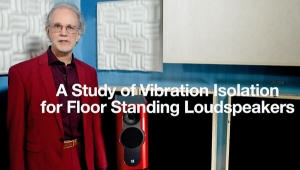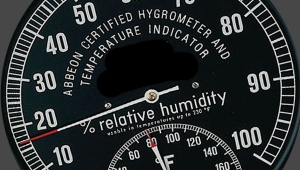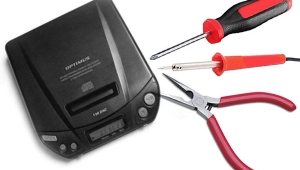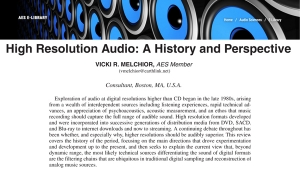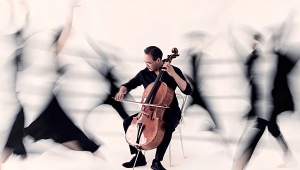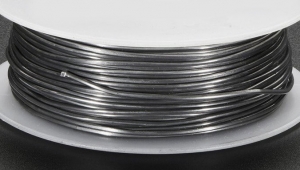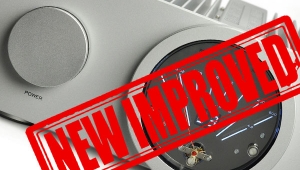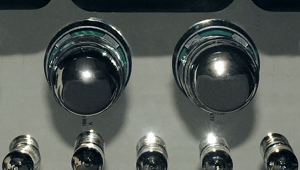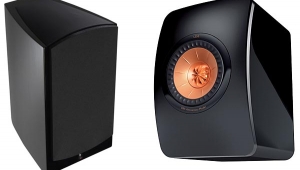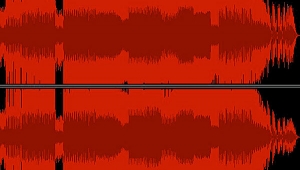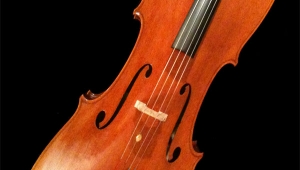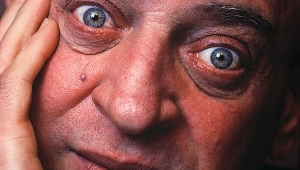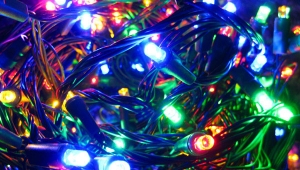| Columns Retired Columns & Blogs |
Are Audiophiles Music-Lovers? Page 2
I had the ceiling sheetrock---no flimsy ceilings going diaphragmatic in my concert hall---suspended from the rafters with hundreds of exotic, Sorbothane-like units for improved isolation, and hung with the aid of lasers. I installed adjustable, acoustically absorptive blinds so I could tune the room's reverberation characteristics---its RT60---for each musical program. I hung over $25,000 worth of Italian low-voltage lighting fixtures from the ceiling so they could be grouped, aimed, and dimmed to bathe the performers in just the right light. My acousticians swept the hall with sinewaves, warble tones, and assorted noises, then TEF'd and plotted it and subsequently proclaimed my baby the finest environment for chamber music in Northern California. When they were gone and the Zolatone paint was dry, I rolled in a magnificent Steinway concert grand---one that had been built for and used by the Chicago Symphony as a concert instrument, then lovingly rebuilt by Peter Clark with custom Ari Isaac hammers (footnote 3)
Footnote 3: Ari Isaac, a blind piano technician in Toronto, manufactures hammers widely celebrated for their ability to elicit a richer palette of overtones from Steinway and Bösendorfer instruments. Contractual obligations prevent Isaac's iconoclastic and extensively researched designs from being factory-issue on the great concert grands of our day.
Over the next 18 months Keith Yates Audio staged regular chamber concerts by the leading musicians in the region---generally the concertmaster and assorted principals of the Sacramento Symphony. We did the piano and wind quintets of Beethoven and Mozart; string quartets of Haydn and Debussy; an evening of Bach with harpsichord, flute, and violin. There were duets, sextets, octets; little pieces by Vivaldi and Villa-Lobos, Poulenc, Scott Joplin, Pierre Boulez; virtuoso guitar works, cello showpieces. A joyful vocal recital with San Francisco Opera soprano Sara Ganz. If the composer was still alive, we tried to fly him or her out to attend. Terry Riley joined us in a 25th-anniversary performance of his In C, the landmark composition that launched minimalism. We brought Pauline Oliveros out from New York to perform in a composition of hers. Howard Hersh was on hand for the world-premiere performance of a shimmering, ethereal new work of his. Besides the guest composers, there were printed program guides, music-related art showings, and complimentary wine and refreshments at intermission. When these heady events made money, it was donated to local nonprofit music organizations.
Local musicians cooed over the splendid new venue with the great acoustics. The local papers and NPR radio station ran enthusiastic reviews. An editor from the New York Times phoned, trying to figure out whether their business or arts section would be the best place for the story. High-end retailers started showing up from around the world to see what the fuss was all about and to snap pictures for the staff back home. The UPS man brought LPs, CDs, and tapes of artists who wanted to perform in this dramatic space they were hearing about. Composers whose symphonic pieces I'd heard in larger concert halls called to see if we would be interested in doing a few new chamber pieces. Artists and gallery owners wanted to hang their best works. I tell you, this music-lover/audiophile was on cloud nine. The town was buzzing. A national design magazine called the stereo-store-qua-concert-hall a "one-of-a-kind masterpiece." Asked whether they wanted to subsidize the venture by extending generous credit terms, our core suppliers---Madrigal, Krell, Vandersteen, KEF, Martin-Logan, Wilson, Adcom, and many others---called it a "go." The rest of the industry, excited but unconvinced, called it "The Grand Experiment."
Do I have to tell you how stimulating it was to be making history by bringing "the absolute sound" to the audiophile community itself? Do I have to remind you that our little concert hall formed the very heart---philosophically, architecturally, acoustically---of our enterprise? I probably forgot to tell you that making a six-soundroom high-end shop bend to the exigencies of a real concert venue for 140 lucky audiophiles added $100,000 to the cost of the build-out. But not to worry---I took out a second mortgage on the house to pay for it.
There was only one little hitch. My audiophiles---the ones who for a decade had been buying their gear and magazines from me, swapping favorite recordings with me, and reading my articles---never showed up. Oh, they came during business hours to audition the Levinsons and Krells and Wilsons and so on, but they were nowhere to be found during our evening concerts or even during the music-appreciation lectures put on by the symphony association. I tried everything: in-store signs; notices in the newsletters; a little story in the local classical station's magazine; private mailings; personal appeals; phone calls in the night. The excuses were richly varied---audiophiles have fine imaginations---but somehow halfhearted, and often sheepish, as if some unsavory little secret had been dug up. I was stupefied. Customers who'd spent thousands and tens of thousands on state-of-the-art components to "capture that elusive magic of live music" wouldn't let me sell them a $15 ticket to the real thing. I couldn't give them tickets. So who filled the 140 seats? Regular people who read about it in the papers, people who went home to maybe $600 worth of ratty old Sansui gear driving epileptic speakers wired out of phase with 22-gauge zipcord (footnote 4)
Some months ago The Grand Experiment sputtered, then went bust, belly-up, bankrupt. A decade in the making, then gone---the store, the concerts, the house---the only winners the attorneys and liquidators. So what's the lesson here? That undercapitalization, high overhead, 60% annual growth, and a war in the Gulf can bleed the life out of a company? That's the obvious answer; any junior loan officer at a bank with a billion dollars in bad foreign debt could tell you that. But for me there's something else---another resonance, lingering, more unsettling, closer to home. In the end I confused hardware aficionados and real music lovers. Most audiophiles, I was to learn, don't "do" concerts. It's part of the religion, but not part of the life.
Of course, the insiders, the survivors, those hard-bitten types, have had it pegged all along. With the experiment over, they'll go back to making, selling, and reviewing the gear that honors the real thing. But they won't expose the duplicity that runs deep and quiet in our community. That's for me, the experimenter, who has now earned the right to suggest, ever so gently, to get thee to a concert hall. Or get a new mantra.
Footnote 3: Ari Isaac, a blind piano technician in Toronto, manufactures hammers widely celebrated for their ability to elicit a richer palette of overtones from Steinway and Bösendorfer instruments. Contractual obligations prevent Isaac's iconoclastic and extensively researched designs from being factory-issue on the great concert grands of our day.
Footnote 4: Perhaps Mr. Yates should have made audiophile recordings in his hall, for release on his Audio Verite label. Audiophiles might then have attended the concerts in order to later compare them with their "real thing": the recordings of the concerts.---RL
- Log in or register to post comments
